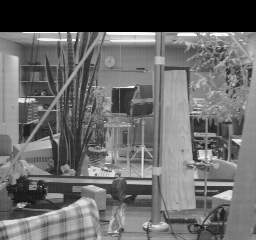
In the previous experiments, with a single planar surface, the only strong advantage of using the log-polar geometry was the substantial save of memory and computation time. In fact, using the full cartesian images should provide better estimates (more precise) of the planar transformation, since more information following the same model was available. In these experiments we demonstrate an important algorithmic advantage of using the log-polar geometry when the object of interest and the other objects in the field of view follow different motion models. In this situation, the implicit focus of attention in the center of the images implemented by the log-polar geometry helps in the rejection of background motion.
In these sets of experiments we assume 2 planar surfaces. One is used as the background:

and the other is used as the foreground object to track along time:

The background is assumed to be 10 meter away from a virtual camera and the foreground object at 0.5 meter. We tested different scales for the foreground object ranging from 36% to 2.25% of the full image's area:
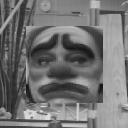
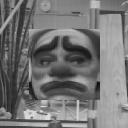
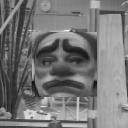
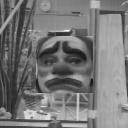
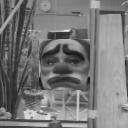
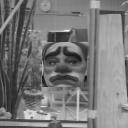
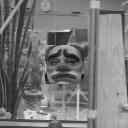
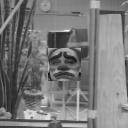
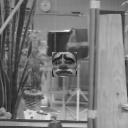
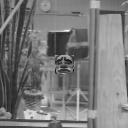
For a fair comparison between the cartesian and log-polar versions of the algorithm, check check this table that relates the size of the objects and its effective occupancy of the visual field.
The algorithm will be applied to both cartesian images and their corresponding log-polar images. We will show that one of the advantages of using the log-polar geometry is related to the scale of the foreground object - the log-polar version of the algorithm copes with smaller objects.
We present 3 sets of experiments. In each set, the virtual camera moves according to some criteria. Then the tracking algorithm tries to estimate the parameters of the foreground object's motion induced by the camera motion.
The camera moves in a diagonal trajectory, parallel to the background and foreground surfaces. This motion produces image translation of both the foreground and background surfaces but with different amplitudes. The tracking algorithm is applied and the estimated transformation parameters are computed. We evaluate for several object sizes and camera displacements whether the computed parameters follow the foreground motions.
In every case we use the form TAP of the algorithm.
In the first set of experiments, we evaluate the maximum displacement between two consecutive images both for the cartesian and log-polar versions of the algorithm..
In the second set of experiments, the estimated transformation from one image to the other is saved and used as initial guess to the next time step. This is the normal behavior in a tracking application.
In the third experiment I control the pan and tilt degrees of freedom of the virtual camera order to have the template almost always in the field of view.